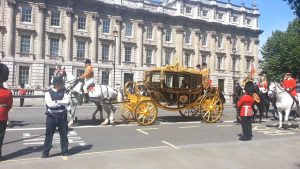West Indies cricket is moving up. The team moved from eighth to seventh in test cricket in the world in January 2009. And cricket caught my eye at Christmas, a really hard thing to do at the time of sorrel and black cake. There was the team on TV playing in New Zealand. Also, as we drove through Bridgetown, Barbados, what else could have caught your eye like the striking high-tech looking Kensington Oval, the Mecca of Windies cricket, with its Three W’s stand that looks something like the star ship Enterprise.
The team must still be basking in the afterglow of the sexy International Cricket Council World Cup 2007, which our West Indies Cricket Board honchos say was a resounding success that broke all records for ticket sales bringing in a whopping US$52 million shared among the territories which hosted games.
Hit the pause button and rewind. The West Indies ranks seven out of nine test playing countries, topping only New Zealand and Bangladesh, after the Caribbean team swapped places with the Kiwis. That New Zealand match was being played before empty stands. The Barbados government alone is still paying off a $150 million bill for rebuilding Kensington for the World Cup; and the WICB and its knight in shining armour, Texas billionaire, Sir Allen Stanford, who was to have rescued the game from his fiefdom in Antigua, have fallen out of love.
So what’s the story? Let’s begin with the World Cup that had occupied the minds of West Indian cricketing aficionados, pundits and planners for a decade. It was to be a tough haul. Windies cricketing glory days were behind as the team stumbled from number one to six by 2002, with Brian Lara the only batting drawing card and no dominant fast bowler; the region had only five grounds up to true test standards and they were (are) scattered over a continent (Guyana) a chain of islands (Trinidad, Barbados, Antigua) and a galactic flight to Jamaica.
The logic of organizing preliminary games and the final round over such a geography compounded by inter-territorial rivalry was itself a yeoman’s task. The expectation was that the romance of cricket, sun, sand, sea and rum would have Englishmen, Aussies, New Zealanders, Indians, South Africans and Pakistanis crawling over the region bringing tons of money, a security nightmare and myriad health risks from communicable diseases.
The hordes did not arrive in the droves expected; happily, since fewer than expected came no diseases came either and the security nightmare that prompted the ICC to demand that sovereign countries turn over their security apparatus to them in a series of “sunset” laws had little effect but to annoy senior police officials and passionate nationalists.
Worse, the mini-horde did not bring the wads of cash that the WICB had been led to believe they could milk at the turnstiles, having given up all broadcast and other marketing rights except gate receipts to the ICC.
Many Caribbean people had prepared for this onslaught – governments building/fixing roads, stadia and vendors readying to sell food and craft. One Bajan entrepreneur even built a hotel out in the boonies near the airport and it now sits mockingly like a deserted prison. All of these may yet find their way to eBay with Governor Sarah Palin’s aircraft.
In some instances, even after local cricket boards brought the tickets down to dirt cheap, free seats still remained empty.
“Tourism professionals were disappointed by arrivals for the 2007 Cricket World Cup, which was hosted by several Caribbean countries in March and April. The tournament failed to produce a highly-anticipated surge in tourist arrivals, despite substantial investment in lodging and transportation,” reported the Economic Intelligence Unit.
But after Australia had won the finals at Kensington and had gone home, success was declared.
“The audited report of the ICC Cricket World Cup West Indies 2007 Inc. (CWC 2007) shows that the tournament had an overall surplus of US$53.9 million, believed to be the highest event surplus in the history of the Cricket World Cup,” the WICB reported February 29, 2008. “Of this amount, US$29.3 million was paid out to the Local Organizing Committees on behalf of the Governments of the Caribbean as of December 2006. The WICB will also be further sharing 25 per cent of its portion (US24.6 million) of the profits with the territorial cricket boards.
“The financial performance included audited ticket sales of US$31.4 million, the highest ever recorded in the history of the Cricket World Cup.”
“We had the highly unusual circumstance of ticket sales substantially outpacing attendance. Over 672,000 tickets to the event were sold which surpasses the last World Cup in South Africa which sold 625,000 tickets. However, only 436,000 persons actually came through the turnstiles,” the Grenadian prime minister Keith Mitchell proudly reported to his fellow Caribbean Community heads at a meeting in July 2007 when the CWC 2007 boss Jamaican Chris Dering presented his report.
Dehring addressed the issue of attendance: “On a native population of six million people that would be creditable, but it is somewhat disappointing given the high level of ticket sales,” he said.
“However, the Caribbean can still hold its head high in this area. The ticket sales of US $32 million are the highest ever recorded for any World Cup or ICC event, and that is a record we can be proud of.”
The ringing endorsement did not come from the ICC. “It has been a challenging year for the ICC, but one in which we have hopefully restored our reputation as an organisation that delivers outstanding world events, following the disappointments of the ICC Cricket World Cup 2007,” president Ray Mali, a South African said in the ICC Annual Report and Accounts 2007-2008.
But the ICC did report a $264 million surplus for the period that included the World Cup, the bulk coming from the series.
“Surplus for the period includes a profit of USD 239 million from the ICC Cricket World Cup 2007 and USD 21 million from ICC World Twenty20 2007,” reported the ICC in its consolidated financial statements, December 31, 2007. The money was paid out the participating boards, including “USD 101,350 thousand paid to West Indies Cricket Board for hosting ICC Cricket World Cup 2007.”
The ICC had on its books an outstanding loan to West Indies Cricket Board US$55,712,000 and a note explained, “Loans outstanding at 31 March 2007 were settled against distributions of the ICC Cricket World Cup 2007. The loan granted during the period and outstanding at 31 December 2007 will be settled against distributions of the ICC Champions Trophy 2008.”
The problem for the WICB seems to be money although a July 2007 report from Kingston quoted chairman of the ICC CWC 2007 Inc’s Board of Directors, Trinidadian Kenneth Gordon, as describing the event as a financial success and saying the profits would serve to eliminate the WICB’s financial deficit.
One of the lamentations facing not just the West Indies but the world cricketing fraternity is that the game, if not dying, is stagnant. The 10 test playing teams have been reduced to nine with the expulsion of Zimbabwe; and in a world steeped in fast moving action sports like soccer, basketball, and even North American versions of hockey and football, the five-day test series is under pressure from the one-day international and the attractive (to non-purists) 20/20 series with its millions in cash for club teams.
The WICB’s collaboration with Antigua-based Texas billionaire Allen Stanford in the 20/20 arena was short lived. Sanford ignited the region with million dollar prizes, put zip in the game with bottom twisting antics and all by players and brought out new talent hidden in places like Montserrat, and the US and British Virgin Islands.
His offshore banking empire provided the cash for the venture that included offering a million dollars to national boards in the region in $200,000 tranches. It’s whispered that the collapse of the franchise stemmed from boards’ refusal to open up accounting to Stanford and the WICB wanting to distance itself from an organization, Stanford Financial Group, a leading lobbyist against Washington’s push for reporting requirements intended to identify the foreign owners of suspicious accounts.
Stanford, who makes no secret of his love for the type of game that may catch the fancy of Americans and the rest of the non-cricketing world, has moved his 20/20 business to England and lost former Windies friends who want to retain the gentlemanly afternoon tea break game.
Stanford has a point. Nobody in his or her job hunting mind these days of under employment can afford five days off to attend one game of cricket.
West Indies had already brought the game into “disrepute” in the 1970s and 80s with Michael Holding, Joel Garner et al doing high fives on the field, so nobody in cricket heaven is going to allow further degradation by players win’ing their waists and doing celebratory dances as Stanford loves it, drawing the game closer to soccer and its hooligans and somersaulting goal scorers. The sides just can’t take tea. It’s a class thing even on the left which would have the late socialist warrior CLR James rolling in his grave, if we go by his Kiplingesque “What do they know of cricket who only cricket know?” in his landmark 1963 tome on the game, Beyond a Boundary.
The intellectual and anti-colonial gravitas invested in cricket by people like James would suggest that the game will never be embraced by those outside the Anglo-British colonial orbit. If the aim was for colonials such as the Australians, and enslaved peoples, like the West Indies, to demonstrate to England that it could be beaten at its own game, the revolutionary North Americans set out to prove they could create their own game, like their brutal version of football that is given its own intellectual worth.
There is talk of opening test cricket to countries like Holland, with one commentator noting that there are even teams in El Salvador, that went to war with Costa Rica over a soccer match. And with fervent calls by the insular to disband the Windies in favour of teams from all the component countries, Bangladesh’s global cricket ranking would certainly rise from nine of nine to nine of 20 maybe.
But for the time being, perish the thought. The Kensington Mecca is expected to host the third test in a series against England, February 26 to March 2, and we hope for at least a draw and that the gate will make a dent in the $55 million even if the team comprises eight Jamaicans, one Barbadian, a Trinidadian and a Guyanese. Also, with 2010 marking the 100th anniversary of the first combined West Indies side (against MCC in 1910-11) who would be the jackass to call in the team on 99?














[…] Abeng News Magazine asks “the $55 million question: Whither West Indies Cricket?” Posted by Janine […]